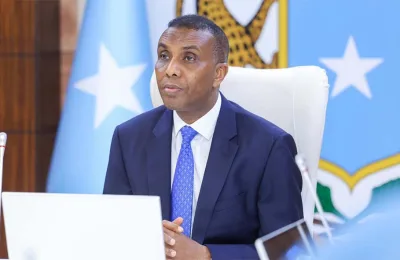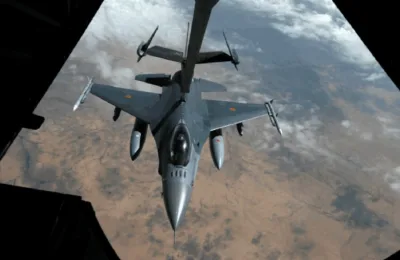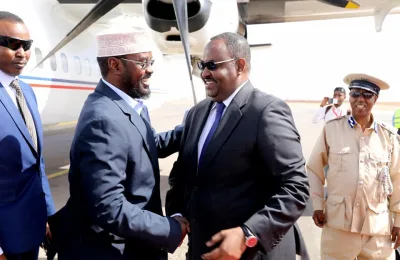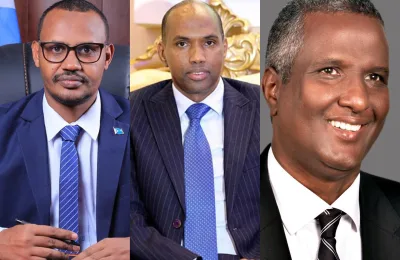WASHINGTON – Departing Defense Secretary Jim Mattis closed out a two-year run as Pentagon chief Monday,…

WASHINGTON – Departing Defense Secretary Jim Mattis closed out a two-year run as Pentagon chief Monday, ushering in a period of intense uncertainty for the military with President Donald Trump set to choose new leadership and issuing murky orders for U.S. troops abroad.
“Our Department is proven to be at its best when the times are most difficult. So keep the faith in our country and hold fast, alongside our allies, aligned against our foes,” Mattis said in a farewell missive to Pentagon personnel.
Mattis’ successor on an acting basis will be Deputy Defense Secretary Patrick Shanahan, a longtime executive with the defense contractor Boeing. Shanahan joined the Trump administration in July 2017 with a background in management but no government or foreign policy experience.
After months of rumors that he would step down, Mattis resigned Dec. 20, one day after Trump ordered a withdrawal of U.S. forces from Syria and directed the Pentagon to draw up withdrawal plans for Afghanistan. Mattis said in a parting letter that the president deserved a defense secretary whose views are “better aligned” with his own.
Trump initially announced Dec. 19 that the U.S. withdrawal from Syria was imminent, as he declared victory over the Islamic State.
“Our boys, our young women, our men, they’re all coming back, and they’re coming back now,” Trump said in a video posted on his Twitter account. “We won.”
His decision drew widespread criticism from lawmakers and allies concerned that a hasty departure of U.S. forces could allow the extremists to regroup.
But in statements since then, including a tweet Monday, the president has suggested that the pullout would not be completed so quickly, adding to the uncertainty about the timing of his plans.
“ISIS is mostly gone,” Trump tweeted Monday, referring to the terrorist group. “We’re slowly sending our troops back home to be with their families, while at the same time fighting ISIS remnants.”
In Afghanistan, U.S. and Afghan officials are still awaiting a final decision from the president after he directed plans to cut the number of U.S. troops from about 14,000 to 7,000. U.S. officials in Washington and Kabul have since said that they have not received any new orders but are bracing for a change.
The defense secretary departed Monday without any of the typical pageantry of the office, such as a farewell ceremony attended by the president. Instead, Mattis released a short memo that cited an 1865 message from President Abraham Lincoln to Gen. Ulysses S. Grant: “Let nothing which is transpiring change, hinder, or delay your military movements, or plans.”
Mattis, a retired Marine four-star general, had pledged to stay through the end of February to give the president a chance to find a successor and move him or her through the confirmation process. But Trump abruptly decided Dec. 23 to oust Mattis by Jan. 1, following days of critics worrying about what Mattis’s departure means for the nation.
Several members of the Joint Chiefs of Staff also are due to be replaced within the next year. They include Marine Gen. Joseph F. Dunford Jr., the Joint Chiefs chairman; Air Force Gen. Paul J. Selva, the vice chairman; Gen. Robert B. Neller, the Marine Corps commandant; and Adm. John M. Richardson, the chief of naval operations. Trump announced in December that Dunford will be replaced by Gen. Mark A. Milley, the Army chief.
As Pentagon chief, Mattis has stressed the need to stay engaged with allies, going so far as to compare the isolationist tendencies of some Americans now to those in 1930s, just ahead of World War II. The United States was happy then “between our two oceans” but later realized “what a crummy world if we all retreat inside our own borders,” he said last year in Singapore.
Trump, meanwhile, has questioned not only deployments to war zones but the need to house tens of thousands of troops in peacetime in Europe and South Korea.
Under Mattis, the Pentagon expanded its military operations in several locations around the globe, including Syria, Afghanistan and Somalia, and also secured larger Defense Department budgets than ever. Simultaneously, critics questioned how Mattis could stay on as defense secretary, especially after he defended a controversial deployment of active-duty troops to the southern U.S. border just days before the Nov. 6 midterm elections.
Trump’s decision to withdraw from Syria proved too much for the Pentagon chief. Although his letter did not mention Syria directly, U.S. officials around Mattis said that he believed a withdrawal would be a betrayal to Kurdish troops who have fought with U.S. backing against the Islamic State. Turkish President Recep Tayyip Erdogan, who views the Kurdish militia as an extension of the Kurdistan Workers’ Party (PKK), which it deems a terrorist group, has pledged to bury Kurdish fighters in their own trenches.
The president’s latest pronouncements about Syria followed more than a week of criticism from many fronts, including quiet pressure from close ally Israel and conservative pro-Israel voters who are part of Trump’s base of support. Israeli Prime Minister Benjamin Netanyahu has urged Trump to reconsider his abrupt announcement of an end to the three-year-old mission, a senior Israeli official told reporters Monday.
Trump agreed to a gradual withdrawal rather than a sudden one following a phone call with Netanyahu, several Israeli news outlets quoted the unidentified official as saying.
Netanyahu is traveling in Brazil, where he will meet Secretary of State Mike Pompeo on Tuesday when both attend the inauguration of populist President-elect Jair Bolsonaro. Netanyahu is expected to continue to press his case that the U.S. presence is a needed check on Iranian military proxies operating in Syria.
Netanyahu has argued for months that the threat from Iranian influence in Syria is rising, effectively placing Iranian-linked military groups at Israel’s formerly placid border with Syria. National security adviser John Bolton, who will meet separately with Netanyahu next weekend to discuss the Syria decision, had voiced the same concerns as recently as September, when he said the United States would remain in Syria as long as Iranian proxies were also on the ground there.
Trump’s decision also drew a rare rebuke from the American Israel Public Affairs Committee, which warned in a statement that “damage control” would be required following a U.S. withdrawal and echoed Netanyahu’s frequent demand that Iran be prevented from establishing a permanent military presence in Syria. AIPAC also retweeted bipartisan criticism of Trump’s decision that went much further than the organization’s statement.
Sen. Lindsey Graham, R-S.C., who had emerged from lunch with Trump at the White House on Sunday to say that the president was “taking this really seriously,” later tweeted what he said are Trump’s rubrics for the mission now.
Any plan the United States has for withdrawal from Syria will need to ensure that the Islamic States is permanently destroyed, that Iran does not take over territory now held by the terrorist group and that Kurdish allies are protected, Graham tweeted.
This article was written by Dan Lamothe and Anne Gearan, reporters for The Washington Post.







